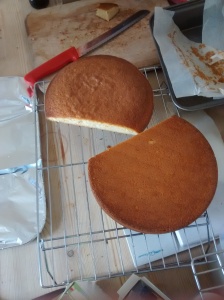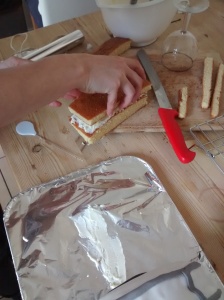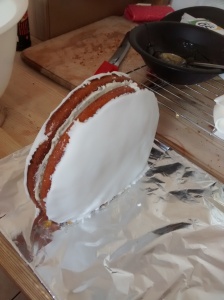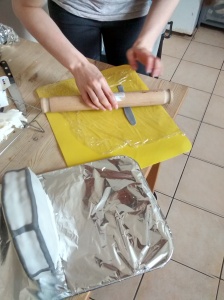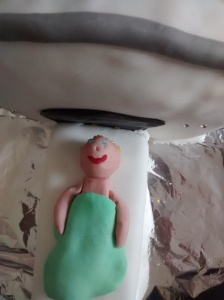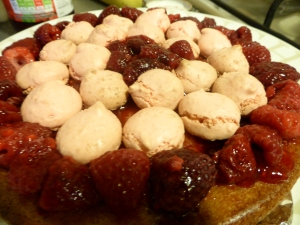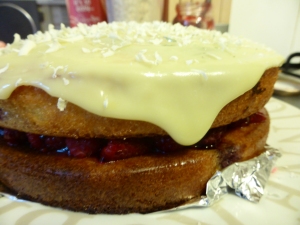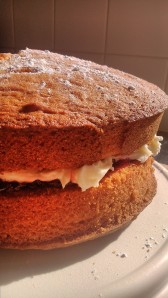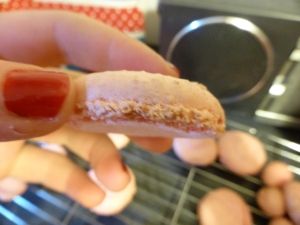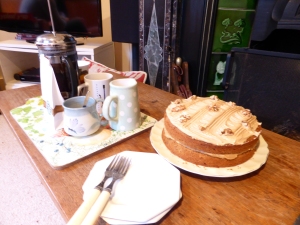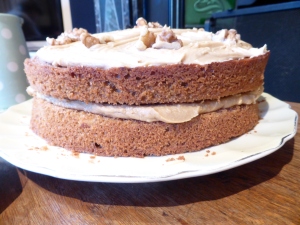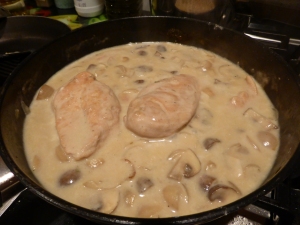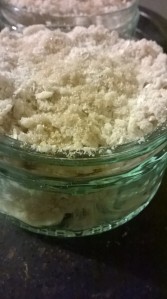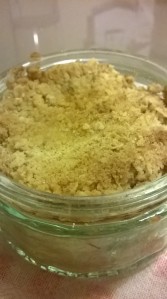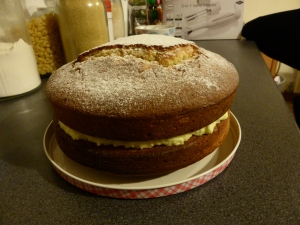This is an “opinion piece” that I wrote for a module recently. Seeing as I’m not baking at the moment (though I did bake a Bakewell tart for a Christmas present), I thought I’d post some physics-related blogs.
Women in Science: “I Am Not the Exception”
Recent research suggests that there is a difference between men and women’s brains [1]. A recent BBC Horizon episode entitled “Is Your Brain Male or Female?” gave many examples of this. The programme quoted a statistic that men have a 10% larger brain on average than women despite there being no difference in average IQ. Apparently size doesn’t matter. However, there clearly is a physiological difference in brains; it has also been seen that the neural connections in the male and female brain are different. One study has used functional magnetic resonance imaging (fMRI) to study the differences between men and women undertaking a visuospatial navigation task using maze exploration [2]. It was found that men and women use different parts of the brain to navigate (the left hippocampus for men; and right parietal, and right prefrontal cortex for women).
There are other studies that could be quoted to demonstrate the differences between the male and female brain. Whether these dissimilarities are due to nature – hormone fluctuations in the womb; brain size etc. – or nurture – society and pressures from those around us growing up – is a discussion that is ongoing and does not have an answer as of yet. In Horizon, Professor Alice Roberts took the stance that these differences are due to societal pressures and nurture; whilst Dr. Michael Mosley shared his view that there is likely an innate difference between the sexes from (before) birth. I think there is probably a mixture of both nature and nurture causing the variations between the sexes, although I think that the nature aspect is highly important since it is not something we can change and is a fact of life.
Despite this scientific research suggesting differences between male and female brains, society does not seem to want to accept that it may be that men are better – on the whole – than women at certain subjects; whether this be due to innate, “hard-wired” physiological differences or to the environment we are brought up in. Men do significantly better than women in visual spatial tasks, whereas women score higher in emotion-based tests. This, along with many other factors, may begin to explain the differences in subject choice of study between men and women.
In 2010/2011, 53% of people studying at undergraduate level all science subject areas were female. In subjects allied to medicine; veterinary sciences; agriculture and related; biological sciences; and medicine, there was a majority female cohort. However, in mathematical and physical sciences; architecture, building and planning; computer science; and engineering and technology there was a majority male (WISE UK statistics 2012). In 2013, 55.2% of all accepted university applications were to female students (UCAS statistics).
All these statistics can be taken to show that women are not less able than their male counterparts: clearly there is no shortage of women being highly educated, and this is not a debate about academic ability. So why this drive to get women into STEM (science, technology, engineering and mathematics) subjects? Why is there no similar drive to get men into veterinary science; biological sciences or other female-dominated subjects?
The push that we are currently witnessing to get women into STEM subjects makes it seem that there is some urgency and inequality about the situation. The government is even giving funding to try and encourage more women into engineering. Meanwhile, I find it interesting to note that there is no effort to get women onto the building site despite the meagre 6% of women in the building industry.
I would be committing no social faux-pas in commenting on the physical differences between males and females – whether that is anatomically or the general differences such as men tending to be stronger than women. Building is a physically demanding job, and is no doubt one reason that we see more men in the job than women. That is generally an accepted statistic that raises little cause for concern. Yet, for some reason we seem to encounter a problem when a difference is claimed between the brains of men and women; and when that difference is quoted as the reason for difference job choices.
Given the research, no-one is claiming (and if they do they cannot be taken seriously) that one sex is more intelligent than the other – we have already seen that despite differences in brain size there is no average IQ difference, and that in fact more women go to university in the UK than men. There must be some other reason that we regard “women in science” to be an “issue”, and one to be remedied at that.
It seems to me that maths and mathematical studies are held on a bit of a pedestal; perhaps explaining why we hear the term “maths brain” but not “history brain”. If one has an affinity for maths, they are often perceived as very intelligent – more so than someone with an affinity for English, say. Maybe this is because we all speak and use English every day in one sense of the term, but it is no uncertain thing that we do not all possess the talents of Keats, Shakespeare or Malorie Blackman. This “elevation” of the mathematical sciences to a regarded higher intelligence level may give some explanation for why people worry so much about making sure women are “properly” represented in these areas.
On a related note, these subjects tend to be associated with the more highly paid jobs – especially those in the City such as finance. Since there is a large and ever-growing group intent on getting women into exactly “equal” positions to men, they must make sure that women are well-represented in STEM subjects. There is a large desire for the 20% higher salary that men earn to be reduced so that both men and women can earn the same average wage (this is a discussion for another time and involves a lot of controversial issues like women having babies, so I shall say no more on it now).
Another consideration that I would suggest perhaps demands some research of its own is that men may suffer through the initiative to get women into science. Seeing their female contemporaries being actively sought out; given scholarships to take engineering subjects; and given gender-specific careers events, must have some effect on men and their perception of their value within the subject. Every time I receive a “women only” e-mail I wonder if this is fair since I am sure my male counterparts are not treated in this way.
To me, the whole “issue” of women in science (or STEM) is a non-issue. Yes, I am in the minority but no, I am not the exception. I have decided to study a subject (physics) that interests me and presumably, which my brain is suited to. Yet I do not think that young girls need to be pushed into taking up physics, maths or any other subject; and equally, young boys do not need to be encouraged to take English, the biological sciences or anything else. Being a woman has no effect on my status as a physicist, so there is no need to call me a “woman in physics” thank you very much: that clarification is unnecessary and unhelpful.
To conclude, research is definitely showing us that there are differences between the male and female brain – in size and in neural connections. It is also unarguable that men and women are different. Yet the drive to get women in STEM subjects continues with vengeance. I believe this is due to the perceived intellectual nature of mathematical subjects, and the potential monetary advantages linked to these subjects. The statistics show that women in STEM subjects are few but women in other sciences are flourishing in number, and this is no bad thing. Neither men nor women should be pressured into subjects they do not wish to pursue, and there should be no bias in incentives to get them to their end goal. We have been created differently, with brains which appear to function differently. We should embrace this, and be grateful for it.
[1] Ruigrok, A.N.V, Salmimi-Khorshidi, G., Lai, M-C., Baron-Cohen, S., et al. A meta-analysis of sex differences in human brain structure Neuroscience and Biobehavioral Reviews 39, (2014) 34-50
[2] Grön, G., Wunderlich, A.P., Spitzer, M., Tomczak, R. et al., Brain activation during human navigation: gender-different neural networks as substrate of performance Nature Neuroscience, 3, (2014) 404-408
